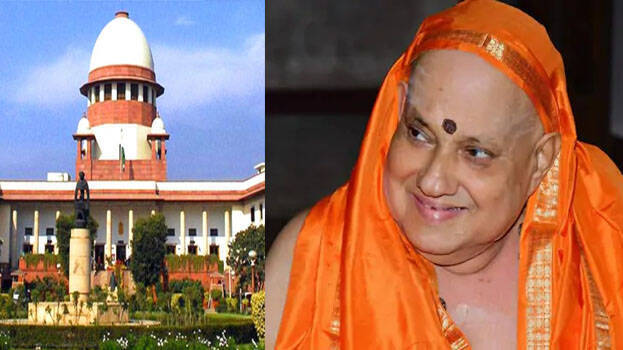

NEW DELHI: Kesavananda Bharati, the seer of Edneer Mutt in Kasargod district of Kerala, who passed away on Sunday early morning is known for his legal battles to preserve the inherent nature of our constitution. The ‘basic structure doctrine,’ was coined by Supreme Court following the persistent legal battle lead by Keshavanda Bharati to preserve the fundamental rights.
Bharati had moved the top court on 21 March 1970 against the land reforms law passed by the Kerala government with an objective to distribute land among landless farmers.
Bharati had contended that the land reforms law by the government was an attempt to impose restrictions on the management of the mutt’s property, which was the only source of income for his ashram.
His petition also challenged three Constitutional amendments — 24, 25 and 29 — passed by the Indira Gandhi government to give Parliament the power to alter fundamental rights.
Bharati argued that the three amendments breached his fundamental rights under Article 25 (right to practice and propagate religion), Article 26 (freedom of religious denomination, including managing and administering its property) and Article 31 (right to property).
While the landmark judgment did not offer individual relief to the seer, the SC ruled that the “basic structure” of the Constitution was inviolable and could not be amended by Parliament.
The “basic structure” doctrine has formed the basis of the Indian judiciary’s power to review or strike down amendments to the Constitution by Parliament, which are in conflict with or seek to alter this principle.
Delivered on 24 April 1973, the verdict involved the Supreme Court’s full strength of 13 judges at that time — the largest bench ever to sit in the apex court. It was a 7-6 split verdict.
The hearing in the matter went on for 69 days — from 31 October 1972 to 23 March 1973 — with acclaimed constitutional expert Nani Palkhivala arguing the case on behalf of Bharati.
What Bharati judgment said
In the Bharati judgment, the SC bench said amendments should not alter the ‘basic structure’ of the Constitution.
It, however, did not specify what would constitute ‘basic structure’, leaving it open for courts to interpret on a case-by-case basis.
Since then, the top court has through various rulings interpreted the doctrine to include the supremacy of the Constitution, the rule of law, independence of the judiciary, doctrine of separation of powers, federalism, secularism, sovereign democratic republic, the parliamentary system of government, the principle of free and fair elections and the welfare state.